The nine-island Archipelago of Azores is situated half-way between the U.S. and Europe, a remote destination that is not easily accessible. The population of the island is small, only 250,000 inhabitants, but prides itself on establishing its own unique, art-based culture and features several food, music, art, and literature festivals each year. With a limited number of flights, the big plus of the Azores is the lack of mass tourism, with a relatively small number of visitors each year, though Delta has recently launched a direct flight from New York to Ponta Delgada on São Miguel! In addition to the islands lush, green landscapes, Azores are noted as one of the 10 best places in the world for both whale watching and sustainable tourism (hiking, mountain climbing, canoeing, and biking). It is also home to Europe’s only tea plantation! Did we mention the plentiful fresh seafood and fine wine and cheese? You will enjoy surveying the various sites of São Miguel with our engaging private guide, Rui!
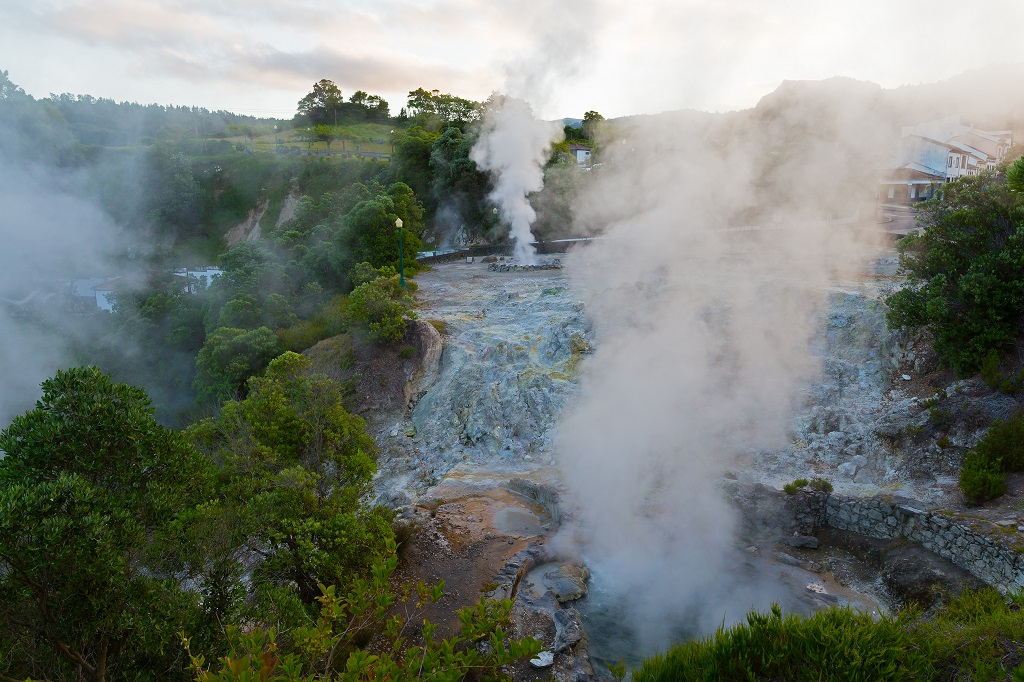
Furnas
This area of São Miguel is the best to observe volcanic phenomena, amassed with thermal pools, set against a backdrop of a subtropical Atlantic forest. The lake is the centerpiece of Terra Nostra Botanical Garden which gives visitors a peek into how European forests were before the Ice Age. The mild weather has kept these islands intact and unchanged. Originally formed by outpourings of lava from the ocean floor millions of years ago, the youngest of the islands is only 300,000 years old. Don’t be deterred by the hot spring bath’s discoloration! Unlike the hot springs we have experienced in Japan and Iceland, the sulfur in the water gives it a muddy look (dark or old swimsuits recommended). The water ranges in temperature from 95 – 104 °F.
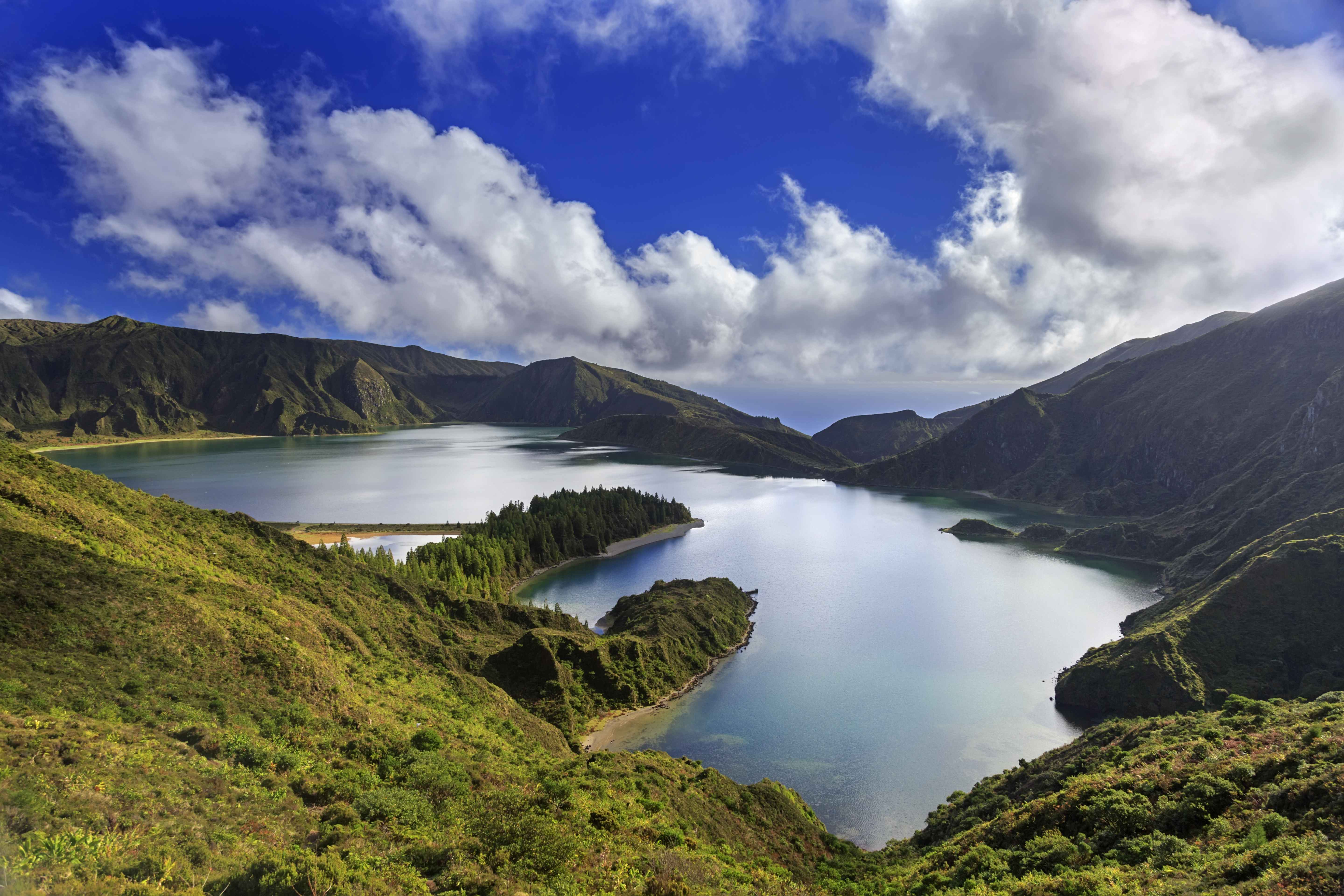
Sete Cidades & Lagoa Fogo
Sete Cidades is located on the western side of São Miguel and boasts a collection of lagoons, it’s most spectacular being the Green and Blue Lagoons. Virtually untouched since the 1930s, this visit is truly unique. You may bike across the lagoon shore or kayak inside a volcanic crater. One of the most striking scenes in the Sete Cidades crater, which stretches about three miles across, created through thousands of years of volcanic activity and collapses. Look towards the crater and you can clearly see the vibrant colors of the blue and green lagoons. Look to the East, and you can see the rest of São Miguel.
Lagoa Fogo “Lake of Fire” is a crater lake at the center of São Miguel, found within the Agua de Pau stratovolcano (a volcano built up of alternate layers of lava and ash). The lake can be reached via a nearly eight-mile hike that is worth the long journey. Beautiful views of the town of Vila Franca do Campo and neighboring beach, Ribeira da Praia can be found here.
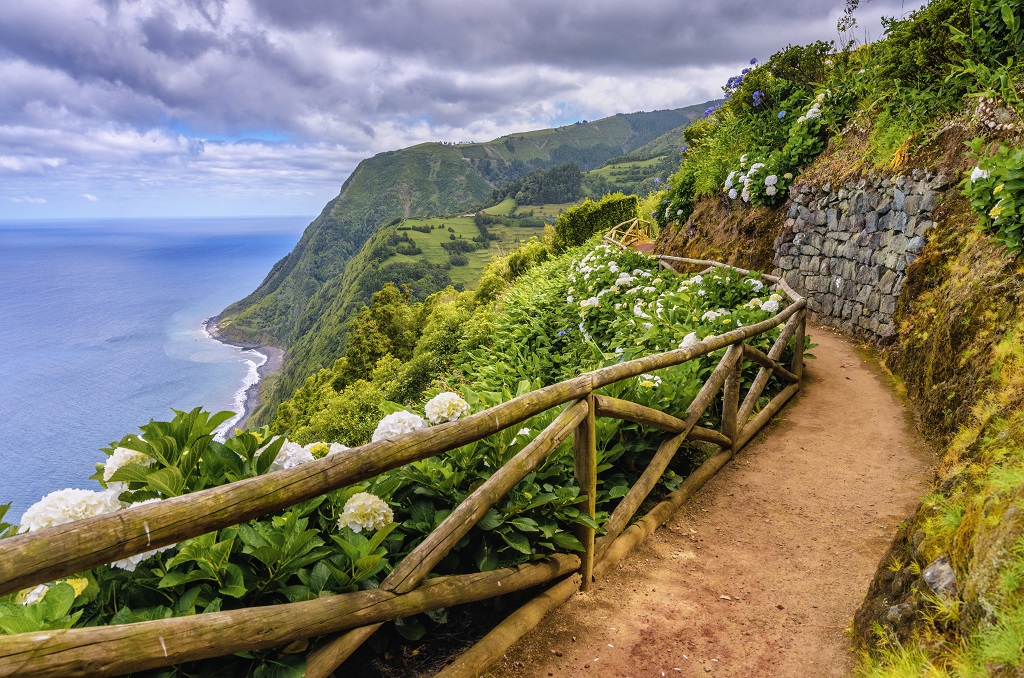
Nordeste “Northeast”
This municipality is arguably one of the most attractive on the island of Sao Miguel. Almost completely covered with trees and lush vegetation, the landscape is remarkable. Mostly untouched by modern development, this small oasis situated at the north-eastern tip of the island is perhaps the least visited part of the island (few tourists!) This stopover gives visitors a chance to see Azorean life as it has always been in a serene and peaceful environment.
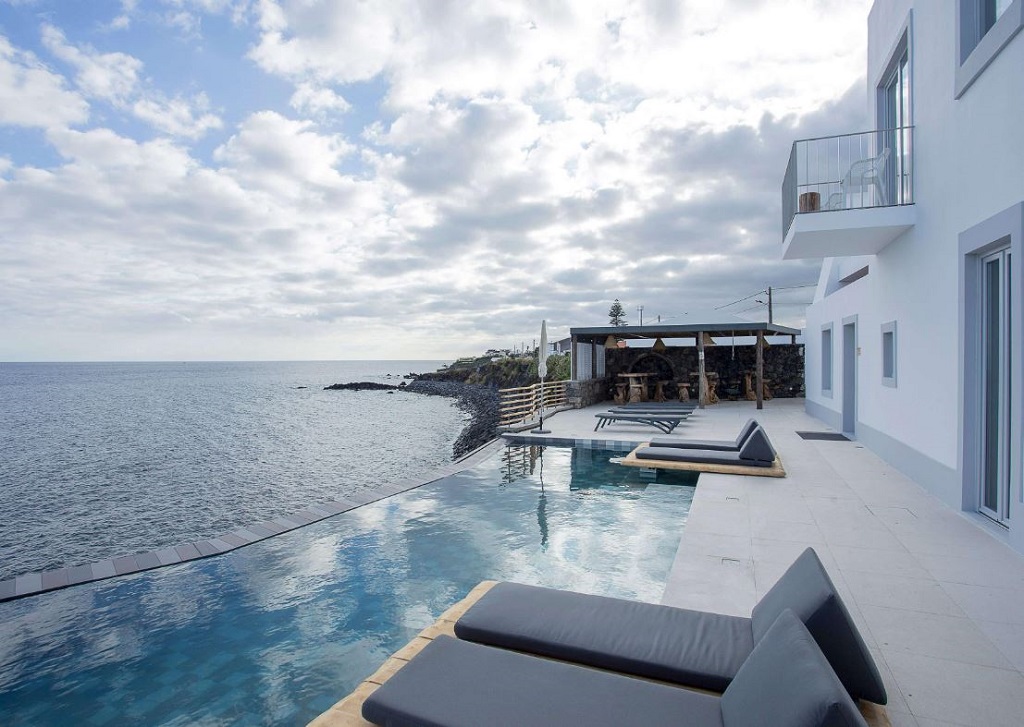
White Exclusive Suites & Villas
Inspired by the white-washed buildings of Santorini, White Hotel owner João Reis is committed to the idea of creating a non-distracting, luxury hotel on São Miguel (at the edge of a cliff!). Opening in summer 2017, the minimalist design focuses the attention outside, rightfully so, and each of the hotel’s nine suites and one freestanding villa features a gorgeous view of the Atlantic below. When he found the crumbling old summer home/winery he chose to design a hotel that would preserve the stone building’s typical Azorean architecture while keeping the focus on what really matters and decorated with natural elements. Most rooms have direct access to the terrace and the heated saltwater pool and some have reading nooks overlooking the sea. The outward-facing design doesn’t stop at the accommodations, even the hotel’s “guest-only” restaurant “Cardume” features an open-air dining hall.
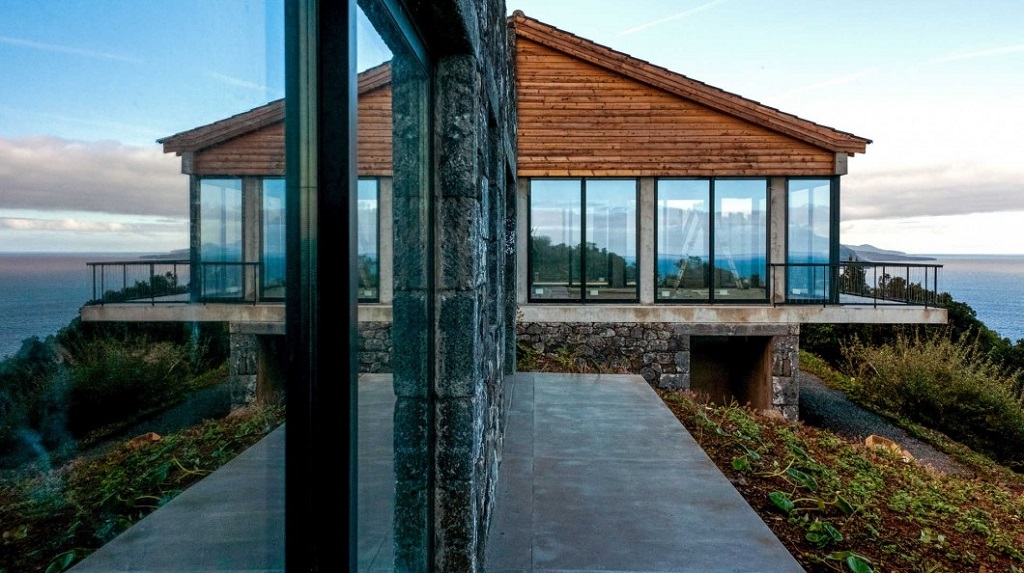
Lava Homes
The 14-cottage eco-resort, Lava Homes, is set to open on Pico Island in 2019. For Luís Filipe Silva, one of the nine partners of the project and the only one who permanently resides in Pico, the aim is to enhance the mystique and wild nature of pico. The island of São Jorge will be visible to the horizon and to the west, weather permitting, it is possible to see the top of the mountain of Pico, the highest point of Portugal.
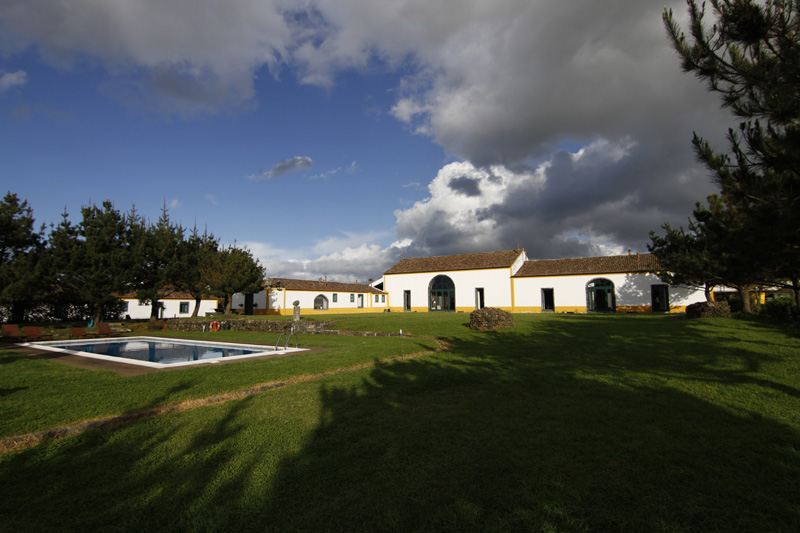
Pico do Refugio Inn
Offering personal service in a compelling historical setting and located just outside the town of Ribeira Grande, this converted tea factory dates back to the XVII century. Though not really a luxury property, the owner’s mansion (Luis Bernardo’s family) has been used as a military fortress, orange tree plantation, and artist residence. Following renovations between October 2005 and August 2008, Pico do Refugio now has eight rooms (five lofts and three apartment-style options). Mid-century furniture and art pieces by painters who stayed at Pico do Refugio on residences decorate the rooms. A recent client was quite pleased with the inn’s friendly, communal dining breakfast. No dinner is served, so you must go out. Owner Luis Bernardo’s family has lived on this estate for centuries. Easily accessible, Luis is open to any questions about his beloved birthplace and the site’s deep history. After breakfast, cultivated from fresh ingredients, holding true to Pico do Refugio’s farming roots, you may take advantage of the many outdoor activities the area has to offer: swim with dolphins, go whale-spotting, take a scuba diving course, or go horse riding. This is truly a place where history, art, and nature exist harmoniously. We think of it as the Benesse House of Portugal!